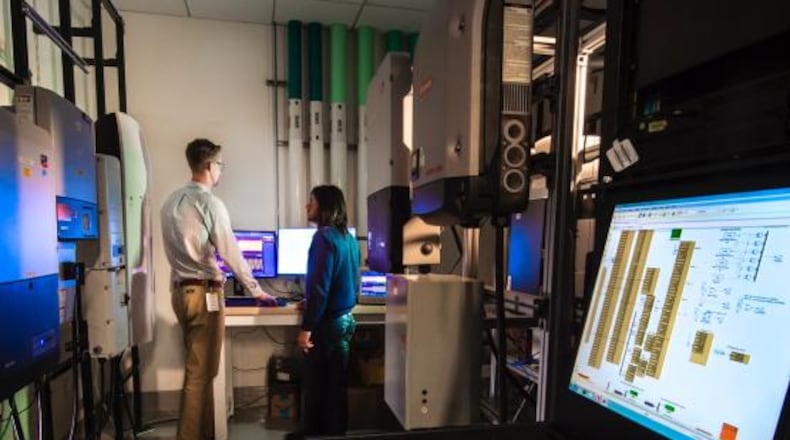Opera uses AI machine learning, harnessing data from the pandemic, such as positivity rates and usage of personal protective equipment. The system looks for ways to predict where those trends are headed.
“One of areas too that was looked at was, can you predict where you’re going to need PPE (personal protective equipment), because you’re going to have a spike let’s say in Columbus or a spike in Cleveland,” Andersh said in a recent interview. “Can you pre-position capabilities to be more responsive?”
AFRL was the customer in that project. Opera is best seen not as a set of results, but as “an in-progress research tool,” Parallax says.
“They predicted needs and spikes,” Andersh said.
The idea is that the tool can be refined to help guide policy decisions on responding to pandemics.
The contract came through the Defense Production Act process. “The Air Force did all the Defense Production Act contracting,” the CEO said. “It was actually in response to them.”
The call to begin the work came from the federal government in April last year, shortly after the pandemic first was truly felt in the United States.
Parallax is engaged in more than that.
“The research spans the gamut,” Andersh said. “But with a central focus on what some may call ‘intelligent teaming’ — so human-to-human interaction, human-to-machine interaction, machine-to-machine interaction, autonomy, which a lot people talk about in your automobile, lane control, voice-to-voice and so forth.”
And there is also research into maintenance of aircraft engines, devising new ways to diagnose and predict when a part might fail, as well as human performance research, exploring how people interact with planes and machines.
The research corporation is also working with Agility Prime, the Air Force exploration of the viability of what sometimes are called “flying cars.”
“It will revolutionize air travel,” said Andersh, a former SAIC executive, who also led WSARC, or the Wright State Applied Research Corp., as Parallax was known in its former guise. “And it’s not that far away.”
Last October, Wright State filed a civil lawsuit WSARC, at about the same time it rebranded as Parallax. The university said it was an effort prevent the organization from “ignoring its obligations” to the university and taxpayers.
Wright State’s lawsuit has focused on property at 4035 Colonel Glenn Highway, which remains the administrative offices for Parallax. Wright State has argued that the corporation acquired the property using WSU’s grant funds as part of a agreement that obligated the university to retain title to the property.
Andersh declined to comment on the litigation or the prospect of a settlement. “I can only say there are two lawsuits — one filed by Wright State and one filed by us. We’re waiting our turn in the court system,” he said.
He stressed that Parallax today is an independent non-profit focused on connecting academia and industry. “There isn’t another company in town like us.”
“We’re not competing with the Peerlesses (Peerless Technology in Fairborn) or the UDRIs (University of Dayton Research Institute),” Andersh said. “We’re really here to help complement all of them, to grow this region and to grow this state.”
At last year’s separation with Wright State, about 70 of 72 employees transferred to Parallax, with 80 employees working for the non-profit today, 70 in the Dayton area. There are also employees in Columbus, Cleveland, Los Angeles, Washington, D.C. and New Mexico.
Roughly a dozen employees work at or for Wright-Patterson, involved in multiple efforts.
About the Author



